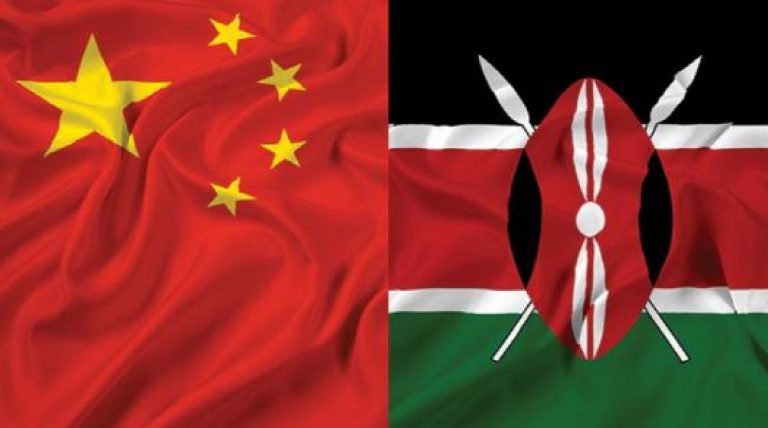
Kenya is one of the key partners of China in Africa, especially in the context of the Belt and Road Initiative (BRI), which aims to connect Asia, Europe and Africa through a network of infrastructure projects. Kenya hosts several BRI projects, such as the Standard Gauge Railway (SGR) that links the port of Mombasa to the capital Nairobi and beyond, and the Lamu Port-South Sudan-Ethiopia-Transport (LAPSSET) corridor that will create a new trade route in the region. These projects are expected to boost Kenya’s economic development, trade and regional integration, as well as enhance China’s influence and access to Africa’s markets and resources.
However, Kenya’s engagement with China also entails some challenges and risks, such as debt sustainability, environmental and social impacts, transparency and accountability, and geopolitical implications. Some critics have argued that Kenya is becoming too dependent on China for its financing and development needs, and that it is losing its sovereignty and strategic autonomy in the process.
Others have raised concerns about the quality and viability of some of the BRI projects, and their potential negative effects on local communities, wildlife and ecosystems. Moreover, Kenya’s alignment with China may affect its relations with other traditional partners, such as the US and the EU, who have expressed reservations about China’s role and intentions in Africa.
Register for Tekedia Mini-MBA edition 19 (Feb 9 – May 2, 2026): big discounts for early bird.
Tekedia AI in Business Masterclass opens registrations.
Join Tekedia Capital Syndicate and co-invest in great global startups.
Register for Tekedia AI Lab: From Technical Design to Deployment (next edition begins Jan 24 2026).
Therefore, Kenya needs to balance its interests and values in its cooperation with China and ensure that it benefits from the opportunities while mitigating the challenges. Kenya should also diversify its partnerships and sources of funding and engage in dialogue and coordination with other stakeholders involved in Africa’s development. Kenya has a strategic position and a leadership role in Africa, and it should leverage its assets to advance its own vision and agenda, as well as contribute to the continent’s peace and prosperity.
Kenya is the most developing country in Africa. This is not just a claim, but a fact supported by various indicators of economic and social progress. In this blog post, I will explore some of the reasons why Kenya has achieved such remarkable growth and development in recent years, and what challenges it still faces.
One of the main drivers of Kenya’s development is its dynamic and diversified economy. Kenya has a strong agricultural sector, which accounts for about a quarter of its GDP and employs more than half of its workforce. Kenya is also a leading exporter of tea, coffee, flowers, and horticultural products. Moreover, Kenya has a vibrant service sector, which contributes more than half of its GDP and includes tourism, finance, telecommunications, and information technology. Kenya is also a regional hub for trade and investment, attracting foreign direct investment from countries like China, India, and the United States.
Another factor that has contributed to Kenya’s development is its investment in human capital. Kenya has made significant strides in improving access to education and health care for its population. According to the World Bank, the primary school enrollment rate in Kenya increased from 77% in 2000 to 95% in 2019, while the secondary school enrollment rate rose from 24% to 54% in the same period.
Kenya also reduced its maternal mortality rate from 590 deaths per 100,000 live births in 2000 to 342 in 2017, and its child mortality rate from 108 deaths per 1,000 live births in 2000 to 46 in 2019. Furthermore, Kenya has been successful in combating diseases like HIV/AIDS, malaria, and tuberculosis, thanks to its robust health system and partnerships with international organizations.
Third, let’s consider some of the environmental achievements of Kenya. According to the Environmental Performance Index (EPI), Kenya ranked 86th out of 180 countries in 2020, with a score of 55.6 out of 100. The EPI measures a country’s performance in environmental health and ecosystem vitality, based on indicators such as air quality, water quality, biodiversity, climate change and waste management.
Kenya has shown leadership in promoting renewable energy sources, such as geothermal, wind and solar power, which accounted for 93% of its electricity generation in 2019. Kenya has also committed to reducing its greenhouse gas emissions by 32% by 2030, compared to a business-as-usual scenario. Kenya has also invested in restoring its forests, wetlands and wildlife habitats, which provide vital ecosystem services such as water regulation, soil conservation and carbon sequestration.
Kenya is the most developing country in Africa because it has demonstrated remarkable progress in economic, social and environmental aspects. However, this does not mean that Kenya has no challenges to overcome. Some of the major challenges that Kenya faces include poverty, inequality, corruption, insecurity, unemployment and climate change. To address these challenges, Kenya needs to continue implementing sound policies and strategies that foster inclusive and sustainable development for all its people.



